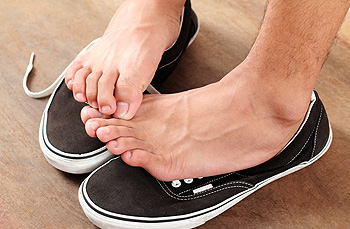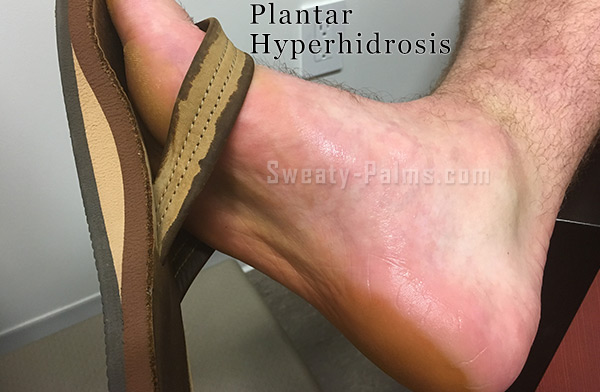Leading Dermatology Treatments for Hyperhydrosis of Hands and Feet: What You Required to Know
Leading Dermatology Treatments for Hyperhydrosis of Hands and Feet: What You Required to Know
Blog Article
Introducing the Intricacies of Excessive Sweating: A Comprehensive Guide to Medical Diagnosis and Administration
Excessive sweating, medically referred to as hyperhidrosis, is a condition that impacts a substantial variety of individuals and can have a profound influence on their top quality of life. While sweating is an all-natural physical function, its overactivity in hyperhidrosis provides an one-of-a-kind set of difficulties that typically surpass plain pain. Recognizing the underlying reasons, recognizing the signs, and navigating the analysis procedure for hyperhidrosis can be detailed jobs. In this detailed guide, we will explore the complexities of hyperhidrosis, from its diagnosis to the variety of therapy options readily available, dropping light on reliable administration techniques for those coming to grips with this condition.

Comprehending Hyperhidrosis Causes
Hyperhidrosis causes can be attributed to numerous variables such as genes, hormone imbalances, and certain medical problems. Genes play a significant role in key focal hyperhidrosis, where people inherit the condition from their household participants. By recognizing the particular aspects adding to excessive sweating, healthcare providers can customize treatment plans to attend to the underlying reason, supplying alleviation and improving the quality of life for individuals impacted by hyperhidrosis.
Acknowledging Hyperhidrosis Effects

In addition, hyperhidrosis symptoms might manifest in social and psychological distress, as individuals may feel embarrassed or distressed regarding their sweating, causing avoidance of social circumstances (Treatment for hyperhydrosis of hands and feet). In addition, duplicated episodes of extreme sweating can cause skin maceration, fungal infections, and a general decrease in self-confidence
Diagnostic Process for Hyperhidrosis
Launching the analysis procedure for extreme sweating includes extensive assessment of the person's case history and health examination. Making inquiries regarding the start, period, and triggers of sweating episodes is vital to set apart in between primary focal hyperhidrosis and second generalized hyperhidrosis. Clinical history ought to also include inquiries about medications, medical conditions, and family background of hyperhidrosis.
Throughout the health examination, particular interest is paid to the locations influenced by sweating. The medical care provider may assess the level of sweating, look for indicators of underlying problems, and examine the impact of sweating on the person's top quality of life. Additionally, specific examinations like the gravimetric examination, starch-iodine test, or skin conductance measurements may be performed to quantify the amount of sweat created.
Furthermore, in situations where secondary hyperhidrosis is presumed, added tests such as blood examinations, pee examinations, and imaging research studies may be recommended to identify the underlying reason of excessive sweating. The diagnostic process aims to accurately establish the kind and reason for hyperhidrosis to guide suitable monitoring strategies.
Therapy Options for Hyperhidrosis
When resolving excessive sweating, different treatment choices are readily available to relieve signs and symptoms and improve the individual's quality of life. The treatment approach for hyperhidrosis depends upon the severity of signs and the client's action to first treatments.
Topical treatments, such as aluminum-based antiperspirants, are usually advised as the initial line of defense for handling moderate situations of hyperhidrosis. These items work by plugging the sweat air ducts, hence lowering the amount of sweat that reaches the skin's surface area. For individuals with more severe signs, oral drugs like anticholinergics may be suggested to help lower sweating. These medicines can have side impacts and are not ideal for everyone.

Effective Administration Techniques
To properly manage hyperhidrosis, a thorough and personalized treatment strategy tailored to the client's details requirements and response to previous treatments is necessary. This strategy might integrate a combination of restorative methods, consisting of way of living adjustments, topical treatments, dental medicines, botulinum toxic substance shots, iontophoresis, and in extreme cases, surgical treatments like sweat gland removal or sympathectomy. Way of living modifications such as putting on moisture-wicking garments, using antiperspirants, and exercising stress-reducing strategies can complement medical interventions. Topical antiperspirants having aluminum chloride Treatment for hyperhydrosis of hands and feet are often the first-line therapy, with more powerful formulas readily available for immune cases. Oral drugs like anticholinergics may be recommended for generalised hyperhidrosis. Botulinum contaminant injections are reliable for focal hyperhidrosis, supplying temporary alleviation by blocking the launch of acetylcholine. Iontophoresis, involving the usage of a reduced electric current to lower gland activity, can be useful for both palmoplantar and axillary hyperhidrosis. Surgical choices are generally booked for extreme, refractory instances and require careful consideration of advantages and risks. A multidisciplinary approach involving skin doctors, health care physicians, and, if required, doctors, can enhance the monitoring of hyperhidrosis.
Verdict
In conclusion, hyperhidrosis is a condition characterized by too much sweating, which can greatly affect an individual's top quality of life. By understanding the causes, recognizing the signs, and undertaking the diagnostic process, doctor can effectively handle this condition. Treatment choices include topical drugs, dental drugs, injections, and also medical treatments in serious situations. With correct diagnosis and monitoring techniques, individuals experiencing hyperhidrosis can discover relief and improve their total health.
Extreme sweating, medically known as hyperhidrosis, is a condition that impacts a substantial number of people and can have an extensive impact on their high quality of life. By recognizing the details variables contributing to extreme sweating, medical care suppliers can customize treatment plans to resolve the underlying cause, providing relief and boosting the quality of life for people impacted by hyperhidrosis.
Hyperhidrosis, characterized by too much sweating beyond what is required for controling body temperature level, can significantly influence a person's top quality of life. Making inquiries about the start, period, and causes of sweating episodes is vital to distinguish between key focal hyperhidrosis and secondary generalised hyperhidrosis. How to stop sweaty hands.In final thought, hyperhidrosis is a condition characterized by excessive sweating, which can substantially impact an individual's high quality of life
Report this page